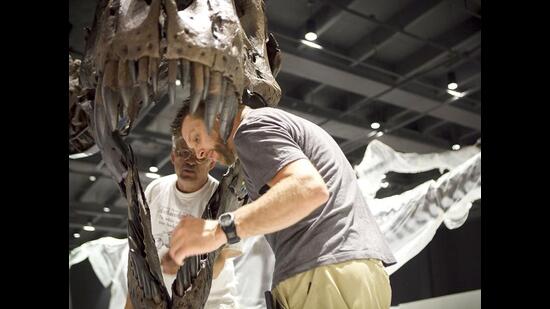Maharashtra to get central museum tracking the state from pre-historic era
This will be a state-level museum and the largest such facility run by the directorate in Maharashtra.
Mumbai: Maharashtra is all set to get a museum that will trace the history of the state from pre-historic times when dinosaurs roamed present-day Vidarbha to the political formation of Maharashtra and beyond in what is likely to be one of the biggest museum projects undertaken by the government in recent times.

“The concept is to lay down the historical past of the state and the stages of Maharashtra’s evolution from the ecological, historic, geological and cultural contexts,” said Tejas Garge, director, museums and archaeology, under the department of culture.
This will be a state-level museum and the largest such facility run by the directorate in Maharashtra.
The ‘Maharashtra State Museum,’ which is a ₹500 crore project expected to come up in Navi Mumbai, will have multiple galleries that will cover the span of the time through artefacts, sculptures and even fossils.
“The galleries and displays will cover the span of the state’s evolution from the pre-historic, stone age, ancient, medieval, Sultanate periods, the eras of Chhatrapati Shivaji Maharaj and the Peshwas, the reign of the British, the social reform movements, freedom struggle, the Marathwada liberation movement and the Samyukta Maharashtra struggle. There will be displays on the post-Independence development of Maharashtra and on the chief ministers of the state so far,” Garge said. The plan will be to link the displays to school syllabus as well, he said.
The directorate of museums and archaeology wrote to the City and Industrial Development Corporation (CIDCO) in April, seeking a land parcel of around 14 acres in Navi Mumbai, following which some land has been allotted in Kharghar. Last month, the directorate has also sought applications for the appointment of a master planner for the project.
Work on the museum may start in a year, once the formal allocation of land and tendering process is completed. The museum is expected to come up in three years since the launch of work.
The directorate has 13 museums across the state including in Aundh (Pune), Kolhapur, Nagpur, Sindkhedraja, Aurangabad, and Satara, which have an inventory of around 50,000 artefacts in all. The directorate also has a collection of around 250,000 coins. The upcoming museum will display some of these artefacts, and will also loan them from the Archaeological Survey of India (ASI) and the Deccan College, Pune.
A cafeteria will be attached to the museum and the menu will be based on the themes of the state’s food culture and its evolution. This cafe, along with an auditorium, will generate revenues to cross-subsidise the museum. Garge added that interactive technologies will accompany the displays. For instance, the natural history section would include an explanation on dinosaur and fish fossils dating to the lower Jurassic period, which was discovered at Gadchiroli in Vidarbha.
The fossils, which were found at Sironcha, have been kept at the ‘Wadadham Fossil Wood Park’ at Sironcha in Gadchiroli. While explaining the Inamgaon culture, which was a Chalcolithic culture that was co-terminus with the Indus Valley Civilization (IVC) and is the first recorded instance of agriculture in the state, stone tools and antiquities will be displayed. While depicting the era of the Satavahanas, who were among the first indigenous dynasties in Maharashtra, a scale model of a building as it stood during that period will be displayed.
“The museum will play a crucial role in exhibiting the cultural chronology of Maharashtra from the stone age, rural chalcolithic and megalithic periods to present times,” said Maya Patil (Shahapurkar), head, department of archaeology, Ahilyabai Holkar University of Solapur. She added that the facility could be used to display artefacts and archaeological finds discovered across the state and to acquaint the younger generation with the state’s history.
Jyotish Desai, former curator of the Bhau Daji Museum, said: “This will enable visitors to know the history of Maharashtra under one roof.” He stressed that the museum should also include epigraphy, ethnographic and numismatic history of the state.



